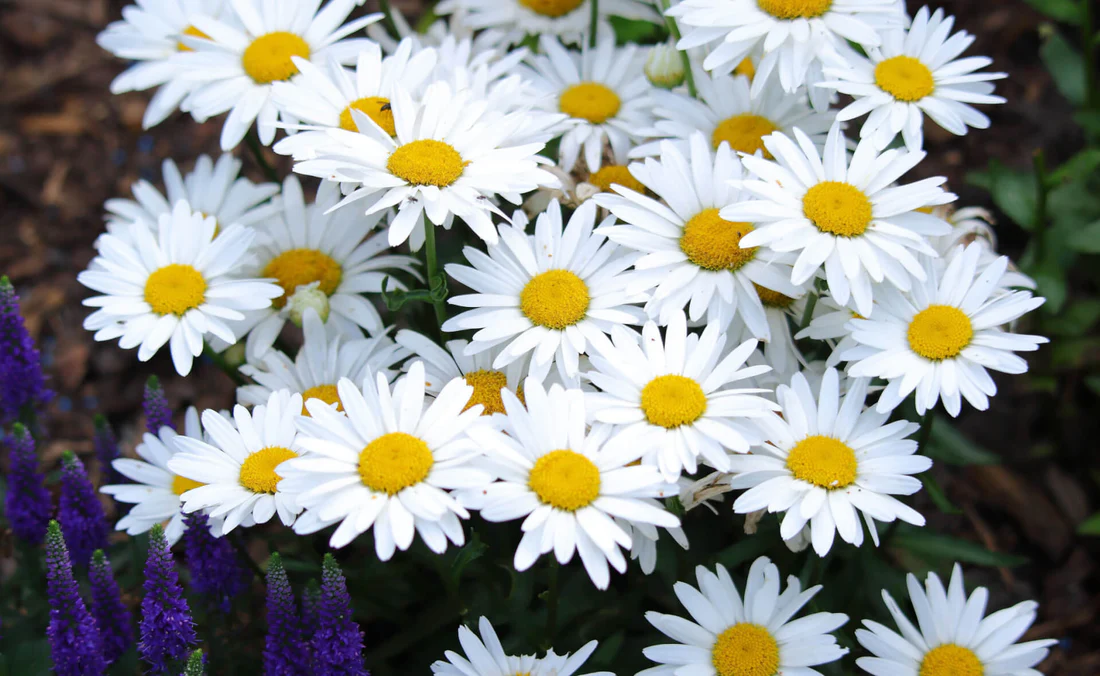
Fall Landscaping with Colorful Perennials
Share
A Symphony of Hues
As summer transitions into fall, many garden enthusiasts face the challenge of maintaining a vibrant and captivating landscape. While summer's warm, sunny days may be waning, the autumn months offer a unique opportunity to breathe new life into your garden with a diverse array of colorful perennials.
This guide will explore the beauty and versatility of some beloved fall perennials, including daylilies, Shasta daisies, Maximilian sunflowers, goldenrods, coneflowers, yarrows, and blanket flowers. These resilient plants can infuse your garden with stunning hues and extend the visual appeal of your outdoor space well into the fall season.
Daylilies (Hemerocallis)
Daylilies are renowned for their striking, trumpet-shaped blossoms that come in various colors, from fiery reds and oranges to soft pinks and creamy yellows. They earn their name because each flower typically lasts only one day, but the plant produces multiple blooms over an extended period. This characteristic makes daylilies an excellent choice for fall landscaping, as they ensure continuous bursts of color throughout the season. These perennials are low-maintenance and adaptable to various soil types, making them a staple in many gardens.
Shasta Daisies (Leucanthemum x superbum)
Shasta daisies are perennial favorites in the world of gardening. These bright and cheerful flowers feature large, white petals and striking yellow centers. Shasta daisies bring a touch of classic elegance to any fall garden with their timeless beauty. Their tall, slender stems make them perfect for cutting, creating charming bouquets to grace your home. Shasta daisies thrive in full sun and well-draining soil, making them an ideal choice for those looking to add a notion to their autumn landscape.
Maximilian Sunflower (Helianthus maximiliani)
The Maximilian sunflower is a native North American perennial that shines in the fall. This sunflower species boasts bright yellow, daisy-like blooms atop slender stems. Their remarkable late-season flowering sets Maximilian sunflowers apart, making them a standout in autumn gardens when most other perennials have faded. These sunflowers are also a valuable pollinator food source, attracting bees and butterflies to your garden. They thrive in the sun with well-draining soil, providing a burst of sunshine even on the gloomiest fall days.
Goldenrod (Solidago)
Often unfairly blamed for allergies (usually caused by ragweed), goldenrod is a striking fall perennial known for its plumes of golden-yellow flowers. These showy blossoms appear in late summer and continue into the fall, adding a touch of warmth and vibrancy to your landscape. Goldenrod is a hardy plant that can thrive in various soil conditions and is an excellent choice for naturalizing your garden. Its nectar-rich flowers also attract beneficial insects, making it a valuable addition to any eco-friendly landscape.
Coneflowers (Echinacea)
Coneflowers are a beloved perennial for their stunning and long-lasting blooms. Their daisy-like flowers feature prominent, cone-shaped centers surrounded by vibrant pink, purple, and white petals. Coneflowers are visually appealing and attract pollinators, making them an eco-conscious choice. They're hardy and low-maintenance, able to withstand cooler fall temperatures. Their unique appearance and resilience make them a must-have for fall gardens, where they provide a welcome pop of color.
Yarrow (Achillea)
Yarrow is a versatile perennial that deserves a place in your fall landscaping. With feathery, fern-like foliage and clusters of flat-topped flowers in various colors, including shades of pink, white, and yellow, yarrow adds a touch of elegance and texture to your garden. This hardy plant is drought-tolerant and thrives in full sun, making it well-suited for the changing conditions of autumn. Yarrow's long-lasting blooms are visually appealing and attract butterflies and beneficial insects, contributing to a vibrant ecosystem in your garden.
Blanket Flowers (Gaillardia)
Blanket flowers, or Gaillardia, are captivating perennials with daisy-like blooms resembling vibrant, fiery blankets. These flowers come in warm, inviting colors, including red, orange, and yellow. Blanket flowers are particularly well-suited for fall gardens because they can withstand cooler temperatures. They also thrive in poor, well-draining soil, making them an excellent choice for gardeners with less-than-ideal soil conditions. Their cheerful appearance and hardiness make them a standout choice for adding color to your autumn landscape.
As the days grow shorter and the air turns crisp, your garden need not fade into dullness. By incorporating these colorful perennials, such as daylilies, Shasta daisies, Maximilian sunflowers, goldenrod, coneflowers, yarrow, Jewelweed and blanket flowers, you can transform your fall landscape into a breathtaking display of nature's beauty. With their diverse hues, resilience, and attractiveness to pollinators, these perennials will ensure that your garden remains a source of joy and inspiration throughout autumn. Embrace the vibrant colors of fall and savor the last bursts of life before winter's arrival, thanks to these magnificent perennials.
